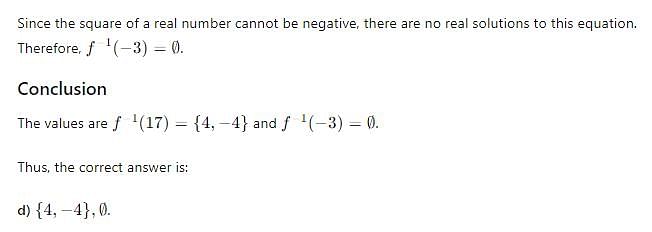Test: Set Theory- 2 - CAT MCQ
10 Questions MCQ Test Quantitative Aptitude (Quant) - Test: Set Theory- 2
The number of elements in the power set of the set {{a, b}, c} is
If R = ((1, 1), (3, 1), (2, 3), (4, 2)), then which of the following represents R2, where R2 is R composite R?
In a room containing 28 people, there are 18 people who speak English, 15 people who speak Hindi and 22 people who speak Kannada, 9 persons speak both English and Hindi, 11 persons speak both Hindi and Kannada where as 13 persosn speak both Kannada and English. How many people speak all the three languages ?
If f : R ---->R defined by f(x) = x2 + 1, then values of f -1 (17) and f -1(-3) are respectively
In a beauty contest, half the number of experts voted for Mr. A and two thirds voted for Mr. B. 10 voted for both and 6 did not vote for either. How many experts were there in all ?
Let n(A) denotes the number of elements in set A. If n(A) =p and n(B) = q, then how many ordered pairs (a, b) are there with a ∈ A and b ∈ B ?
The set of all Equivalence classes of a set A of cardinality C
Let Z denote the set of all integers.
Define f : Z —> Z by
f(x) = {x / 2 (x is even)
0 (x is odd)
then f is
Let R be a relation "(x -y) is divisible by m", where x, y, m are integers and m > 1, then R is
|
191 videos|133 docs|110 tests
|





















